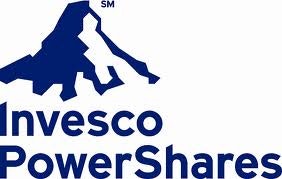
Since most indexes are weighted by market capitalization, that means most index funds use cap-weighting methodology. Translation: The index’s largest holdings are usually those with the largest market value.
In terms of gathering assets, this approach has worked well for ETF sponsors, but as the industry has grown, savvy investors have sought out opportunities beyond traditional cap-weighting. Equal-weight ETFs have served as a popular avenue for investors looking to escape the cap-weighting rut.
Additionally, factor-based ETFs have increased in popularity. A simple definition of factor-based ETFs is that these funds are not quite actively managed per se, but they go far beyond the passive, cap-weighting routine by using growth, valuation and technical factors.
Obviously, investors will want to know if factor-based ETFs generate noteworthy returns relative to their cap-weighted rivals. In some cases, the answer is a resounding yes, so do not forget about these factor-based funds.
PowerShares DWA Devld Markt Tech (NYSEARCA:PIZ) PIZ is the developed markets equivalent of the popular PowerShares DWA Emerg Markts Tech (NYSEARCA:PIE).
PIZ excludes U.S.-based companies and its holdings (usually 100, but currently 104) can be domiciled in, but not limited to but not limited to Australia, Austria, Belgium, Canada, Denmark, Finland, France, Germany, Greece, Hong Kong, Ireland, Italy, Japan, Netherlands, New Zealand, Norway, Portugal, Singapore, Spain, Sweden, Switzerland and the United Kingdom.
And like PIE, PIZ holds stocks that are displaying impressive relative strength traits. That does have a positive impact on returns. Year-to-date and over the past 12 and 36 months, PIZ’s underlying index, the Dorsey Wright Developed Markets Technical Leaders Index, has outpaced the MSCI EAFE Index and the MSCI EAFE Growth Index.
SPDR S&P 1500 Value Tilt ETF (NYSE: VLU) A quick glance at the top holdings of the SPDR S&P 1500 Value Tilt ETF might indicate that this is a cap-weighted ETF. A top-10 lineup that includes Exxon Mobil Corporation (NYSE:XOM), AT&T Inc. (NYSE:T) and Chevron Corporation (NYSE:CVX) has a way of doing that.
However, is far from cap-weighted. This ETF takes stocks that are inexpensive on a valuation basis relative to the S&P 1500 index and overweights those names. Stocks that are expensive relative to that index are underweighted in VLU. Valuation is based on the ratio of its price to its level of earnings, cash flow, sales, book value, and dividends, according to to State Street.
There are a few knocks on VLU. The ETF is up just two percent this year, meaning a simple S&P 500 index ETF would have been a better bet. Additionally, VLU’s average daily volume is just 140 shares. Although the ETF’s underlying holdings are highly liquid, that volume number has the potential to scare investors away. If the volume does not do that, then the fact that VLU has not traded in almost three weeks just might do the trick.
First Trust Exchange Traded AlphaDEX Fund II (NYSEARCA:FCA) With the recent resurgence of China ETFs, debate has intensified regarding which ETF is best for playing the world’s second-largest economy. Investors that can see past FCA’s low assets under management number ($2.4 million) will see this ETF is worthy of a place in the conversation.
FCA holds true to the the AlphaDEX methodology, which has proven successful with other First Trust ETFs. That means the fund’s 50 holdings are selected based on factors including 3-, 6- and 12- month price appreciation, sales to price and one year sales growth, and separately on value factors including book value to price, cash flow to price and return on assets, according to First Trust.
FCA’s largest sector weight is financial services, but the allocation is 26.7 percent, so it is fair to say this ETF is not excessively weighted to Chinese banks as is the largest China ETF, the iShares FTSE/Xinhua China 25 Index (NYSEARCA:FXI). Overall, FCA offers exposure to 10 sectors, double the number of sectors tracked by FXI.
Valuation should not be ignored here because that has been one of the calling cards of China bulls over the past year. Indeed, FXI can still be viewed as inexpensive with a price-to-earnings ratio below 13 and price-to-book ratio of 1.61, according to iShares data. FCA is cheaper with a P/E ratio of less than 9.2 and a price-to-book ratio of just 1.17.
This article was originally written by The ETF Professor, and posted on Benzinga.




